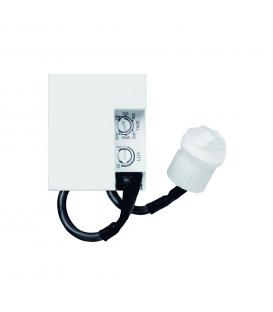Color rendering index (CRI)

Color Rendering Index (CRI) is a quantitative measure used to evaluate how accurately a light source illuminates colors compared to a reference light source, typically natural sunlight or an incandescent bulb. It is a standard method of describing the effect of a light source on the perceived color of objects and surroundings.
CRI is measured on a scale from 0 to 100, with higher values indicating better color rendering. A CRI of 100 represents the ideal color rendering of natural sunlight or a perfect reference source. The CRI value of a light source is determined by how well it reproduces the colors of a set of standard test color samples under that light.
In practical terms, a higher CRI value generally means that colors will appear more vibrant and accurate under that light source. Low CRI values can lead to colors looking washed out, distorted, or unnatural.
CRI is an important consideration in various applications, including:
- Lighting Design: CRI is crucial in architectural and interior lighting design to ensure that the colors of walls, furnishings, and decor are accurately represented.
- Retail and Merchandising: Proper color rendering is essential in retail environments to showcase products in their true colors and attract customers.
- Photography and Filmmaking: Accurate color rendering is vital in these fields to capture scenes and subjects in their intended colors.
- Healthcare: In medical settings, accurate color rendering is important for tasks like accurate diagnosis, surgery, and examination.
- Manufacturing and Quality Control: Industries that require precise color matching and quality control, such as textile and automotive manufacturing, rely on proper color rendering.
- Home Lighting: While a high CRI is generally desirable, it may not be a critical factor for all home lighting applications.
It's important to note that while CRI is a widely used metric, it has some limitations, such as not fully capturing the perception of color under all lighting conditions. Newer metrics, such as the IES TM-30-18, have been developed to address some of these limitations and provide a more comprehensive evaluation of color rendering.
When choosing lighting products, especially for applications where color accuracy is crucial, it's advisable to consider both the CRI and other metrics that provide a more complete picture of how the light source affects color perception.
The Color Rendering Index (CRI) of light bulbs, LED lamps, and luminaires can vary widely based on the type of light source and its spectral characteristics.
Here are some general guidelines for understanding CRI values for different types of lighting products:
- Incandescent Bulbs: Traditional incandescent bulbs have a high CRI, typically close to 100. This is because their spectral output closely resembles that of natural sunlight. However, incandescent bulbs are not very energy-efficient and have largely been replaced by more efficient options.
- Halogen Lamps: Halogen lamps also tend to have a high CRI, often in the range of 95 to 100. They offer good color rendering and are commonly used in settings where accurate color perception is important.
- Fluorescent Lamps: Older fluorescent lamps often had lower CRI values, ranging from 50 to 80. However, advancements in phosphor coatings have led to improved CRI in some newer fluorescent tubes. High-CRI fluorescent lamps are available but may be less common.
- Compact Fluorescent Lamps (CFLs): CFLs typically have CRI values in the range of 80 to 90. While they are more energy-efficient than incandescent bulbs, their color rendering can vary, and some CFLs may not render colors as accurately.
- LED Lamps: LED technology has become increasingly popular due to its energy efficiency and long lifespan. The CRI of LED lamps can vary widely based on the specific LED chip and phosphor coatings used. Standard LED lamps may have CRI values ranging from 70 to 90, but high-CRI LEDs (CRI > 90) are available and offer better color rendering.
- Luminaires: The CRI of a luminaire (a complete lighting fixture) depends on both the light source it uses and the design of the fixture itself. Luminaires designed to work with high-CRI light sources will generally provide better color rendering compared to those designed for lower-CRI sources.
It's important to note that CRI is not the only factor to consider when evaluating the quality of light sources. Other metrics, such as the Spectral Power Distribution (SPD) and the newer IES TM-30-18 metrics, provide additional information about color rendering and color fidelity. When selecting lighting products, especially for applications where accurate color perception is crucial, it's a good idea to review multiple metrics and, if possible, test the light source in the intended environment.






